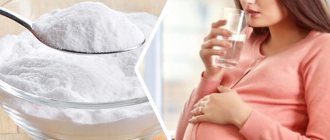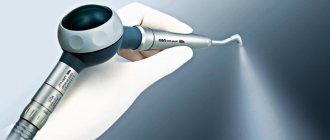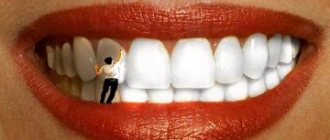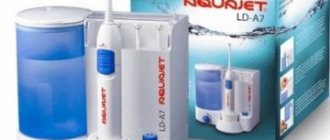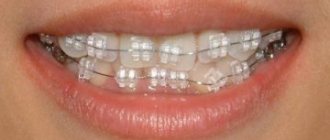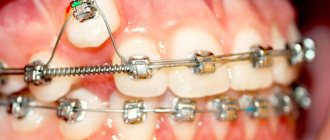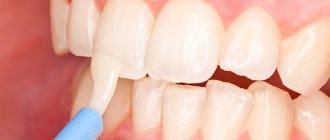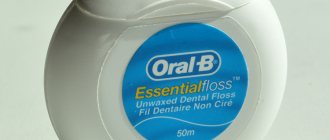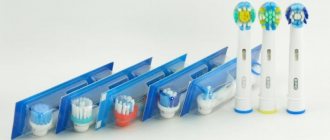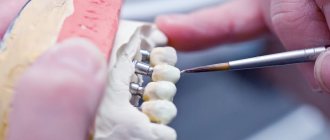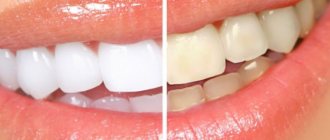Home / Food additives (E) / Stabilizers, emulsifiers (E-400 - E-599)
Back
Published: 01/13/2017
Reading time: 12 min
0
2879
When buying shampoo, toothpaste or dishwashing liquid, few people study their composition. But the fine print contains interesting information: the second in the list of ingredients (after water) is almost always a substance designated by the Latin letters SLS. The product is known as food additive E 487. This is what gives a thick foam and removes fat. At the same time, it has a harmful effect on the skin, mucous membranes of the eyes and oral cavity.
Long-term use may cause brain damage.
- The product's name
- Type of substance
- Properties
- Package
- Application Cosmetics industry
- Production of household chemicals
- Pharmaceuticals and medicine
Composition of shampoos
On the front side of all bottles, manufacturers write only part of the composition - this is an advertising ploy. For example: “with lavender oil”, “with vitamins”, “with a regenerating complex” and other noticeable inscriptions. But in order to find out the real composition, you need to look at the back of the bottle, where all the components of the washing liquid are listed. Almost 100% of all gels and shampoos consist of:
- Water is a universal solvent.
- Surfactants – they foam and effectively wash away oil from hair. These are just various sulfates, including lauryl sulfate. It is almost always present in shampoo.
- Preservatives are substances that provide a long shelf life.
- Auxiliary components are fragrances and dyes.
Sulfates in shampoos
So, what is sodium lauryl sulfate in shampoo? In fact, the washing liquid may contain one of the following components:
- SLS - sodium lauryl sulfate, lauryl sulfate, salt of lauryl sulfuric acid. The powder is white, in solution with water it gives a yellow or brown color. The substance is flammable, biodegradable and does not form toxic compounds during decomposition.
- SDS is the same lauryl sulfate, but under a different abbreviation. Aka sodium dodecyl sulfate, sodium dodecyl sulfate.
- SLES - sodium laureth sulfate, sodium laureth, sodium lauryl sulfoacetate - is found in shampoos and gels as often as SLS, but is considered softer and more gentle.
- ALS - ammonium dodecyl sulfate, ammonium lauryl sulfate in shampoo - a high-foaming surfactant. At elevated concentrations, it can cause irritation to the eyes, skin, and breathing difficulties. Harmful if swallowed.
- ALES is an analogue of ALS in gels and shampoos, ammonium laureth sulfate, or ammonium laureth sulfate.
- SMS and SMES are milder surfactants, sodium sulfate and myristyl ether sulfate.
All these substances have the same property - they produce a thick, very gentle foam that quickly washes away dirt and grease from the hair.
Properties
| Index | Standard values |
| Color | white, sometimes with a yellowish tint; yellow-brown in aqueous solution |
| Compound | empirical formula C12H25SO4Na |
| Appearance | viscous transparent liquid |
| Smell | characteristic |
| Solubility | good in water to form an opalescent solution; average in alcohols; insoluble in ether, benzene |
| Main substance content | at least 70% |
| Taste | absent |
| Density | 1.01 g/cm³ |
| Other | heat resistant; stable in acidic and alkaline environments; When interacting with water, it forms a stable foam |
What are they needed for in shampoo?
All sulfates are added to shampoos and body washes for specific purposes. The effect of sodium lauryl sulfate in shampoo is as follows:
- Degreasing. The chemical formula of all these substances is such that surfactant molecules capture fat particles and bind them with water, thereby providing cleansing. Thus, all products with sulfates have good cleaning properties and easily remove dirt from any part of the body - hair, skin, teeth, etc.
- Thick, voluminous foam. When foamed with water, sulfates produce a good foam, which is especially appreciated in products such as gels, liquid soaps and shampoos.
- Composition stabilization. In the presence of sulfates, all other components, even oily ones, mix well and retain their beneficial characteristics.
But the main and very important property of sulfates for all manufacturers of washing products is their low price. This allows you to include them in any detergent for washing anything.
Let's sum it up
Now you know which products to trust with your hair and how to identify a sulfate-free shampoo. You have the right to choose, I have the right to advise. Don't be categorical. The composition of shampoo without sulfates is more environmentally friendly, of course, but it is not able to cope with severe pollution (especially caused by hair styling and fixing products). The best option is to combine organic matter and salts. Or refuse any chemicals that come into contact with hair: varnishes, gels, mousses, cosmetics with silicones. Personally, I feel weak, and you? 
I prepared the review for you, Nastya Vorobyova. Thank you all for your attention and... we will discuss parabens and silicones soon! =)
I like 88
Where else is lauryl sulfate used?
Most shampoos contain either SLES or SLS. Both components can be present in different concentrations depending on the declared properties of the shampoo: for oily hair the concentration is higher, for normal and dry hair the concentration is lower. Also, these substances, like other sulfates, are used in other cosmetic products, for example, in shower gels, pastes, liquid soaps, creams, etc.
In the food industry, sodium laurelsulfate is an additive E487, a stabilizer. The substance should not be eaten as it tends to accumulate in the liver and spleen and causes significant damage to health. Its harm has been proven and it is banned in most countries. However, sodium lauryl sulfate can still be used in the production of household chemicals, as well as in clinical trials as an irritant.
Hazard Class
All chemicals are divided into hazard groups:
| Hazard Class | Danger level | MPC level | Examples of substance | Consequences of ingestion |
| 1 | Extremely dangerous | 0.1 mg/m3 | Nicotine Potassium cyanide Mercury | Death |
| 2 | Highly dangerous | 1 mg/m3 | Chloroform Arsenic Lead Lithium | Paralysis Poisoning Coma Death |
| 3 | Moderately dangerous | 10 mg/m3 | Aluminum acid Petrol Manganese and aluminum compounds | Poisoning Ulcers Organ diseases Burns |
| 4 | Low hazard | more than 10 mg/m3 | Kerosene Ammonia Aluminum Ethanol Chlorides Sulfates | Poisoning Skin irritation Burns of mucous membranes |
Sulfates belong to hazard class 4, but it is important to note that a person uses this group of chemicals daily, so its concentration in the body accumulates over time and becomes quite high, and therefore poses a serious health hazard.
What is the difference between lauryl sulfate and laureth sulfate
The ethoxylated sodium lauryl sulfate in shampoo is sodium laureth sulfate (SLES). Lauryl sulfate itself is a product derived from petroleum or coconut raw materials. What is the difference between substances obtained from different raw materials? As surprising as it may be to hear, they are no different in chemical composition, and their origin does not in any way affect their positive and negative qualities.
Sodium laureth sulfate is considered a less harmful ingredient than SLS, but it is not as safe as manufacturers claim.
Type of substance
Additive E 487 is an emulsifier, an anionic amphiphilic compound.
The substance significantly reduces the surface tension of aqueous solutions. This facilitates the formation of emulsions, promotes their stabilization, and prevents repeated separation of the colloidal system. When combined with water, the substance forms a stable foam that is not prone to settling. Sodium lauryl sulfate is a mixture of alkyl sulfuric acids. Contains predominantly sodium dodecyl sulfate (up to 85% of the total acids), so these two names are considered synonymous.
Emulsifier E 487 is a product of complex chemical synthesis. The process of obtaining the substance consists of sulfating lauryl alcohol with the strongest reagent - sulfuric acid monochloride. The resulting alkyl sulfates (esters of sulfuric acid) are neutralized with an aqueous-acetone solution of sodium carbonate, crystallized and dried.
The additive belongs to the group of synthetic substances.
Important! Some manufacturers position the substance as natural, obtained from coconut oil. This is not true. Lauryl alcohol is indeed found in some vegetable oils (palm, citrus, coconut), but on an industrial scale it is synthesized from ethylene.
Harm from sulfates in detergents
Why are sulfates so dangerous? The most dangerous among them are SLS, ALES, ALS. It has been proven that sodium lauryl sulfate added to shampoos can cause the following problems:
- This substance, in fact, acts as an oxidizing agent, due to which the hair and skin are cleansed. At the same time, an oxide film remains on the surface, which can cause itching, burning, redness and various allergic reactions, and with prolonged use on sensitive skin - dermatitis.
- SLS, ALES, ALS destroy hydrolipid protection on the skin.
- SLS, ALES, ALS dry out hair, making it hard and brittle.
- When using products that contain sulfates of this group, scalp diseases and dandruff occur more often.
- Since SLS, ALES, ALS greatly degrease the hair, the sebaceous glands on the head begin to work more actively. This leads to the fact that the hair at the roots quickly becomes oily, which necessitates the use of shampoo. It turns out to be a vicious circle.
- SLS is able to penetrate deep into the body and accumulate in various tissues. When the concentration increases, it causes a change in the composition of cells and can cause the appearance of cataracts and even tumors.
Note: even the manufacturers who actually put sodium lauryl sulfate in shampoos and gels note that this substance is not completely safe, but this is not a reason for mass hysteria. In general, SLS is an irritant but not a carcinogen. It can cause certain problems in people prone to dermatitis, sometimes contributes to the formation of ulcers in the mouth (as part of toothpaste), and there is local data from the USA that at a certain concentration of SLS increases the risk of cataracts. However, according to experts from Cosmetic Ingredients Review, neither sodium lauryl sulfate in shampoo nor ammonium lauryl sulfate produces a carcinogenic or embryotoxic effect. Whereas the irritant effect increases with increasing concentration and duration of exposure.
As for SLES (sodium laureth sulfate), it was recognized as a harmless component in 1983. And in general, it gives almost similar side symptoms, that is, itching of the skin, dryness, brittleness and hair loss. In fact, SLES is less irritating to the skin, but just as drying.
In addition, there are some sources that claim that sodium laureth sulfate is also capable of creating dangerous substances with carcinogenic effects in reaction with other components.
Contraindications for use
Products and shampoos containing sodium laureth sulfate are contraindicated for the following categories of consumers:
- after changing hair color;
- people with dry, brittle and damaged hair, as well as hair loss;
- after therapeutic and restorative procedures for hair (Botox, styling, curling);
- persons with scalp irritation;
- persons with sensitive skin of the face and body;
- children.
Deception on the label
In order to understand what exactly is in the shampoo, you need to learn to read the label. The abbreviations SLS, ALES, ALS clearly indicate that the most dangerous sulfates are inside the bottle. However, you shouldn’t expect anything good from other surfactants like SDS, ALES, SMS and SMES - they will quickly make your hair dry and brittle.
The words "sulfate", "sulfacyl", "sulfoacetate" or "sulfate" in the list of ingredients also indicate that the composition contains sulfates.
Since recently not all customers like the presence of sodium lauryl sulfate in shampoo, manufacturers use a trick: in capital letters they write: “WITHOUT SLS,” which does not mean that there is no other similar substance in the list of ingredients. Therefore, when purchasing, you should read everything that is written in the smallest print.
The most unscrupulous companies disguise their sulfate content with vague descriptions like “products of coconut origin.” Therefore, in the store you should choose shampoos with the most accurate and detailed list of ingredients.
Alternative
Which shampoos do not contain sodium lauryl sulfate? This is a large and widely advertised group of sulfate-free shampoos from different manufacturers. However, before you rush to the store for a new product, you need to remember the following:
- All sulfate-free shampoos are more expensive than sulfate ones. And this is not due to the greed of the manufacturer, but to the fact that the components of such a safe composition are more expensive.
- Washing liquids without SDS, ALES, SMS, SMES, SLS, ALES, ALS cannot foam as well, therefore, they are inferior to sulfate ones.
- Many sulfate-free shampoos are difficult to rinse off the scalp, and the hair does not seem clean enough after using them.
- Their consumption is higher, and the bottle runs out quickly.
So you either need to get used to the new composition, or use solid soap or homemade detergent compositions based on egg yolk and soap nuts.
Should I give up sulfate shampoos?
All the hysteria about the harmful effects of lauryl sulfate is reminiscent of a similar situation with vinegar. It is also harmful and toxic, but in moderate concentration it is widely used in cooking. So if you do not drink shampoo with sulfates and do not leave it on the skin for a long time, then it is quite possible to use it.
You can also, for your own peace of mind, replace all shampoos with sodium or ammonium lauryl sulfate with safer products with SLES (sodium laureth sulfate). Or use shampoos with more gentle detergents, such as betaine, sucrose laurate, lauryl glucoside and decyl glucoside.
Main manufacturers
Domestic chemical enterprises do not produce the E 487 additive. The product is supplied by foreign companies:
- ENASPOL GmbH (Germany, Czech Republic);
- Shijiazhuang Leveling Import and Export Co., Ltd.(China);
- Shandong ThFine Chemical Co., Ltd.(China);
- GULF EXPORTS (India);
- Cognis (Germany), the company is part of the BASF concern.
Most often, the food additive E481 is used in toaster bread.
What is proiponic acid and where is it used? Find out about it here.
Annatto is a safe food coloring. You will learn more information about it from this article.
